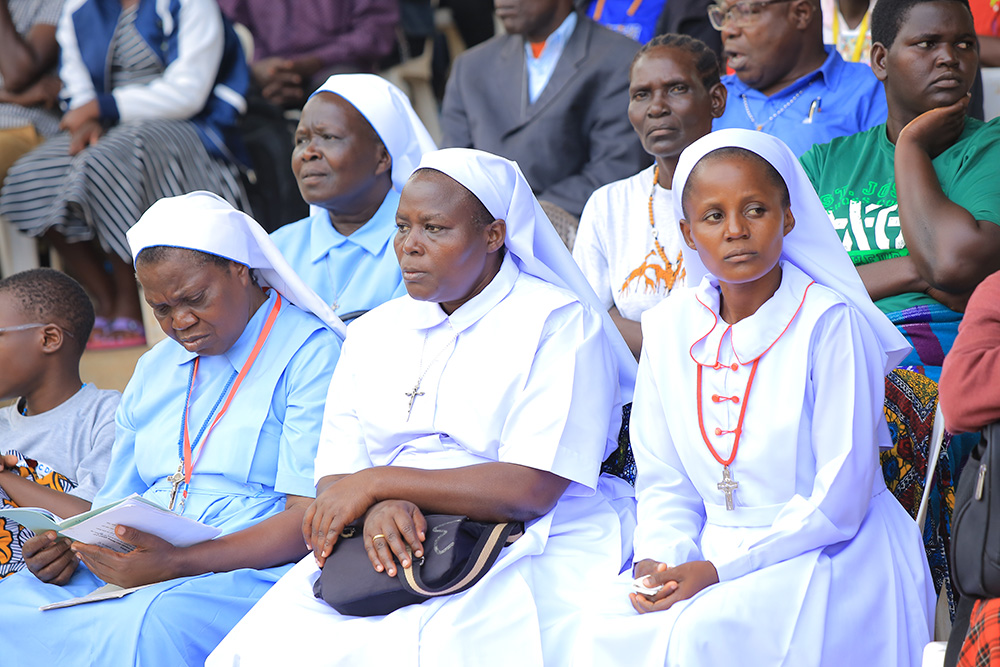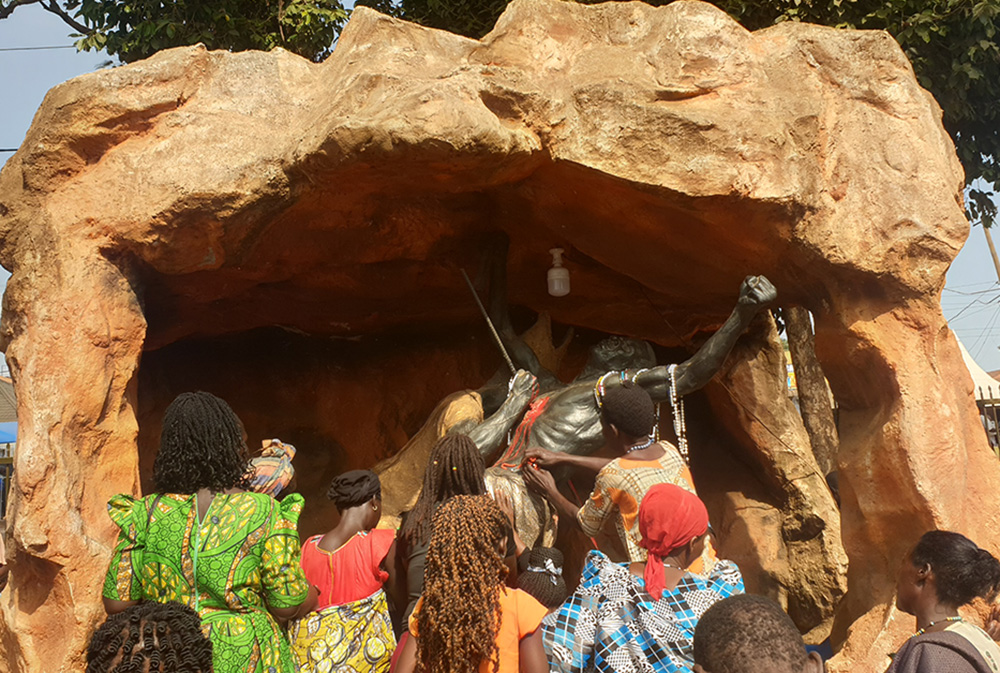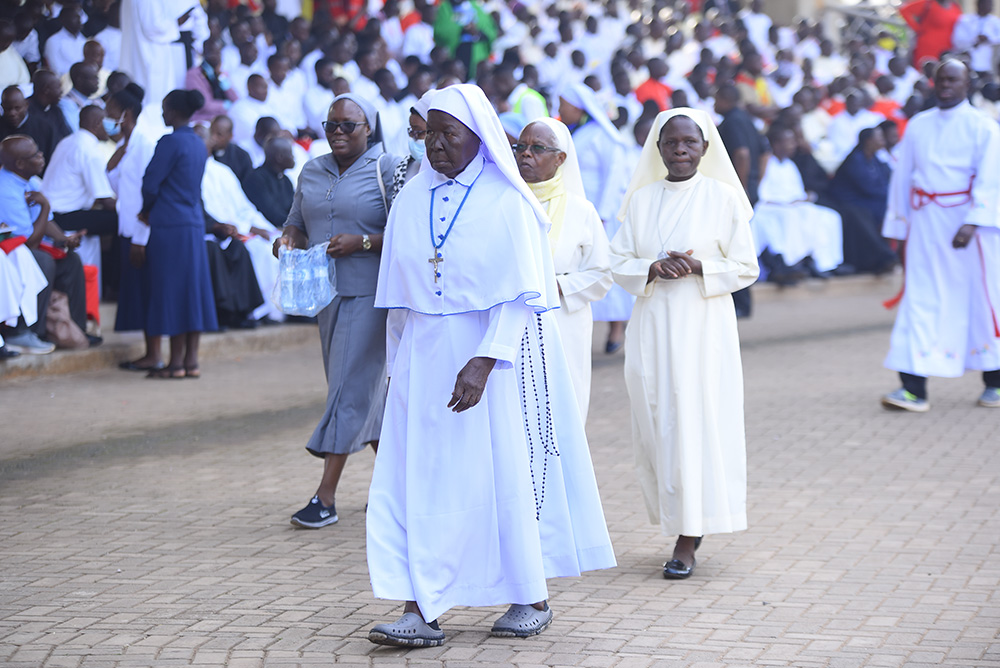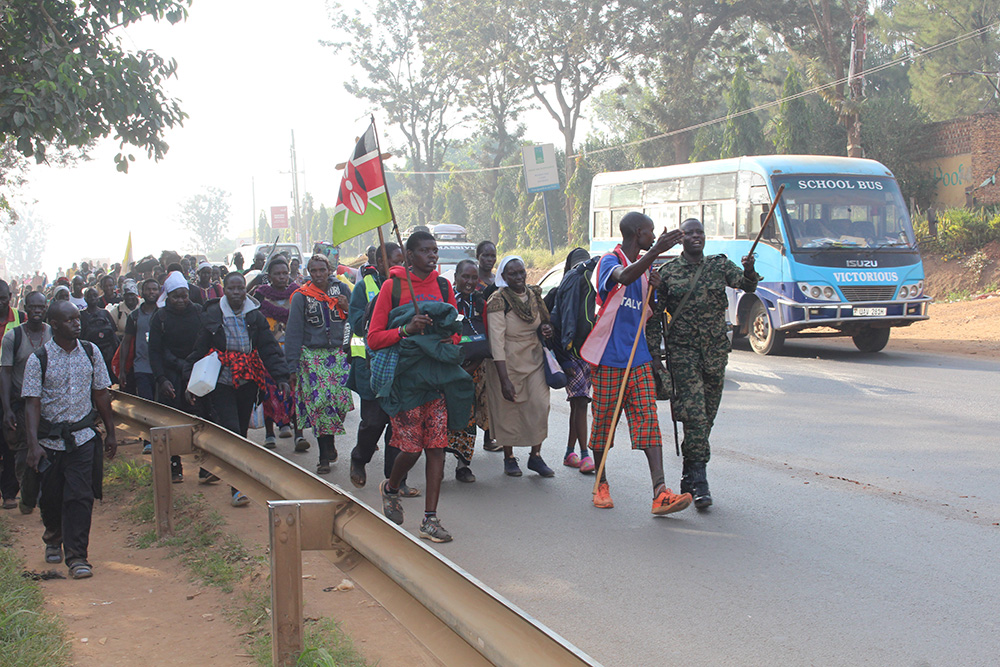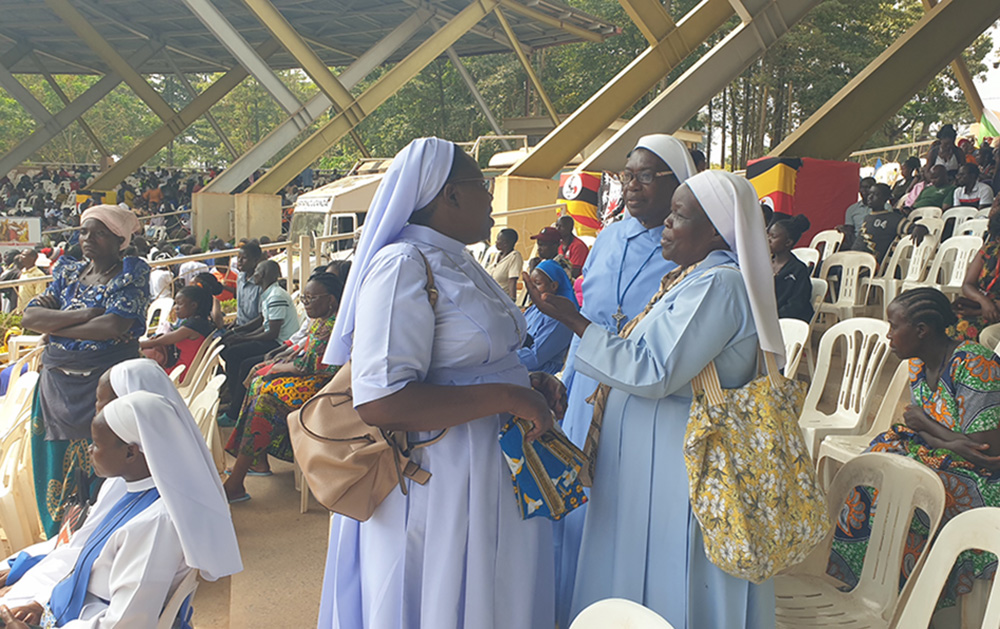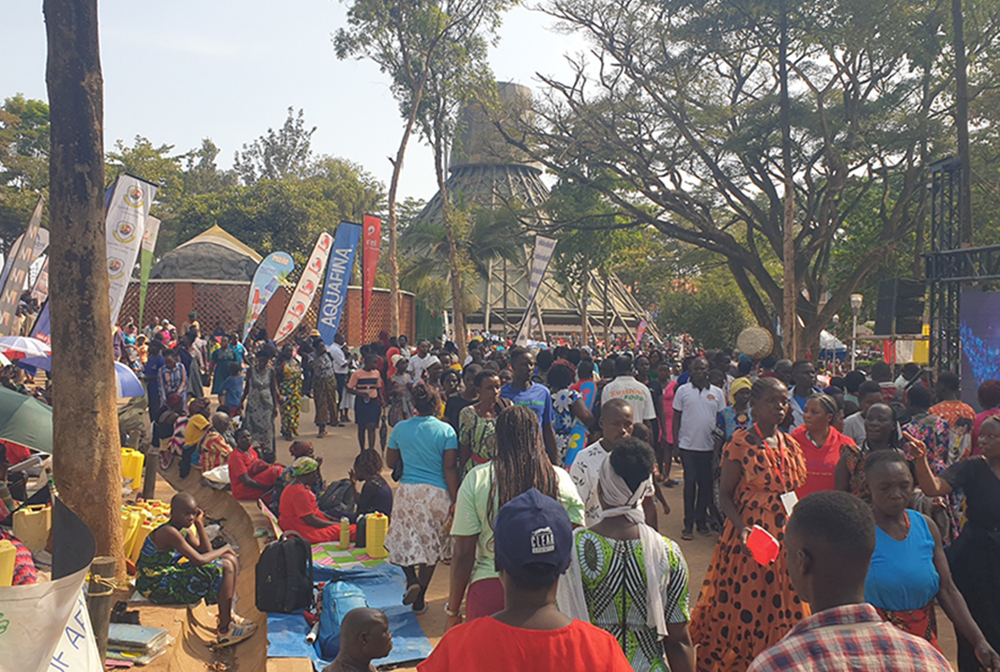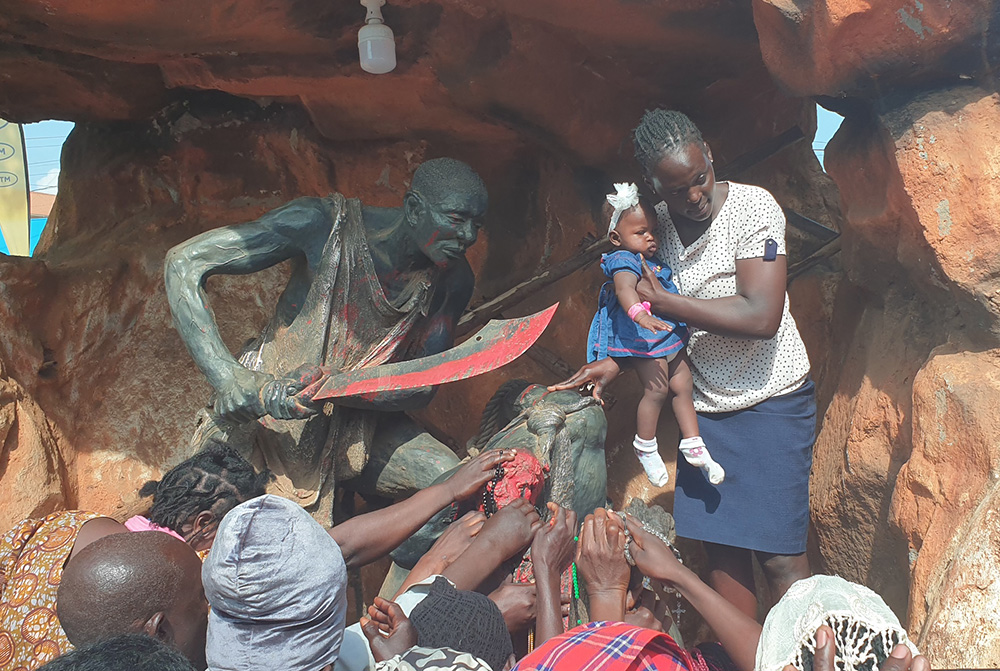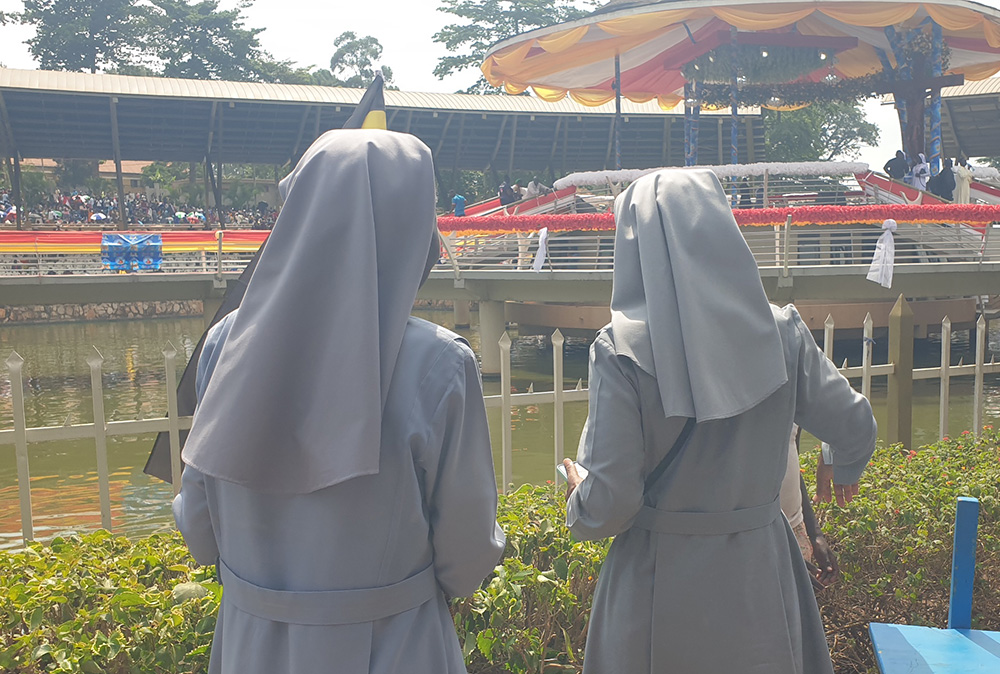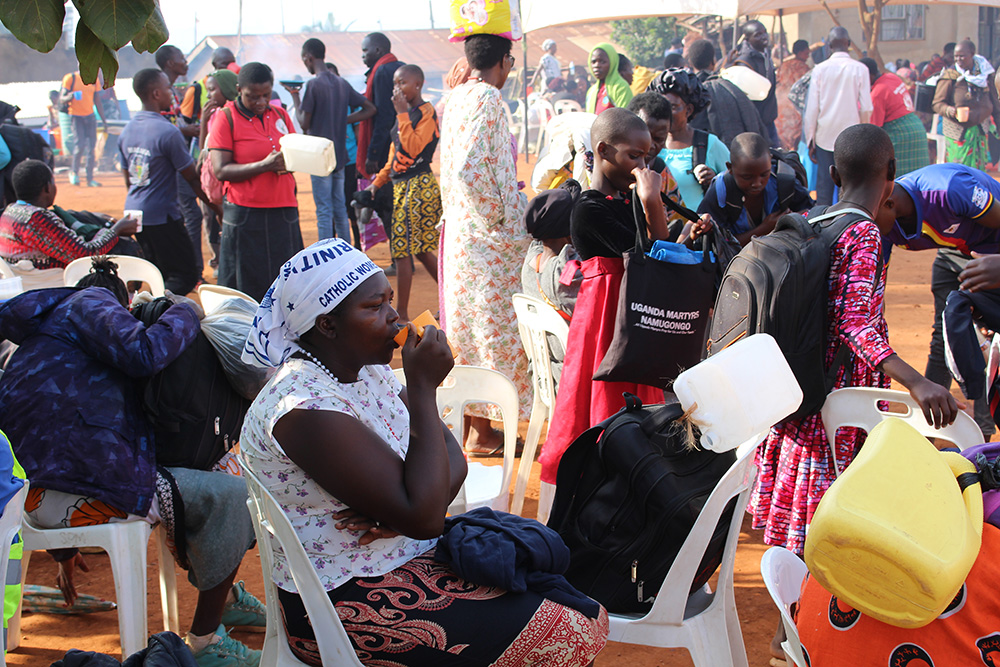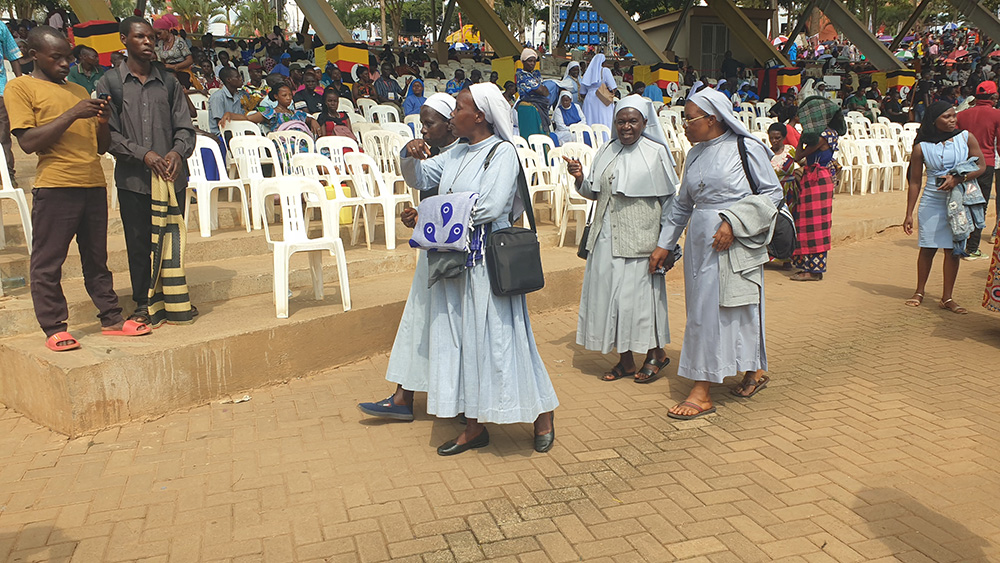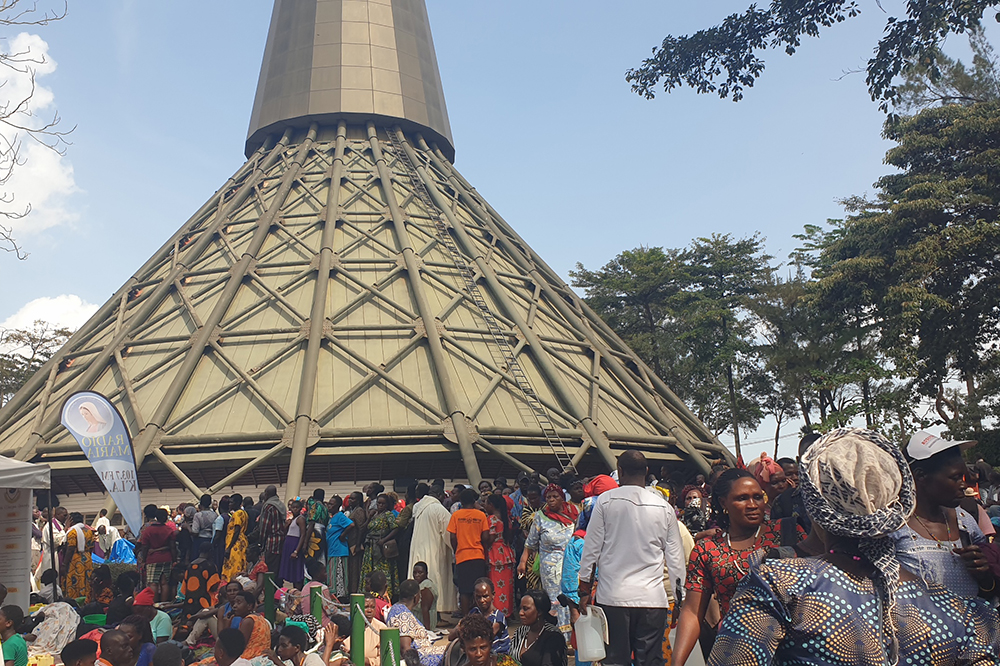
The Basilica of the Uganda Martyrs, Namugongo, is a Roman Catholic minor basilica dedicated to the Ugandan Martyrs. Every year, Christians from all walks of life flock to Namugongo to honor the 22 Catholic and 23 Anglican martyrs burned alive between 1885 and 1887 on the orders of Kabaka Mwanga II, the 31st king of Buganda, who ruled from 1884 until 1888 and from 1889 until 1897. (GSR photo/Gerald Matembu)
Thousands of religious sisters in Uganda and across the African continent are among millions of pilgrims gathering at Namugongo Catholic Shrine in Kampala, Uganda's capital, to celebrate the feast of the Uganda martyrs.
Uganda Martyrs Day is celebrated every year on June 3 in memory of the 22 Catholic and 23 Anglican martyrs who refused to denounce their faith and were condemned to death by Kabaka Mwanga II, then King of Buganda, between 1885 and 1887.
Buganda, which was the kingdom of the Baganda people, was one of several small principalities founded by Bantu-speaking peoples in what is now Uganda.
Advertisement
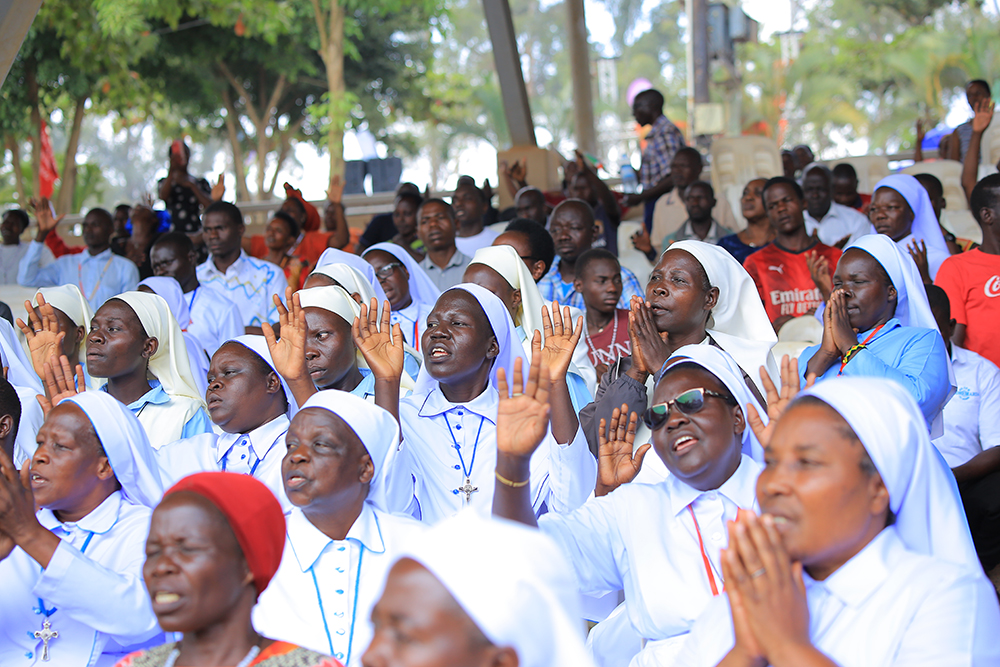
Some of the Catholic sisters attend Mass at the Catholic Martyrs' Shrine of Namugongo in Kampala, Uganda's capital, on June 3, during the Martyrs Day celebrations. (GSR photo/Gerald Matembu)
Mwanga II began his reign in 1884 during colonial times. However, during his reign, foreign missionaries arrived in Uganda and started spreading Christianity. Mwanga II was not amused by the missionaries' teachings. He realized that the missionaries' teachings contradicted the traditional beliefs of his kingdom, and the majority of his followers were increasingly converting to Christianity.
Mwanga II saw the move by the foreign missionaries as a significant threat to his kingdom and power base. Therefore, he expelled missionaries from Uganda and ordered all those who had converted to Christianity to renounce their new faith or face execution.
Many followed the orders of Mwanga II, but some young Ugandan men refused to renounce Christianity, and they were murdered. Over 45 Christians were executed at the time, including 22 Catholic martyrs and 23 martyrs from the Anglican faith. The majority of them were burnt to death at Namugongo village, which was known at the time as an execution ground for prisoners or anyone who angered the king. Other martyrs were brutally tortured, beheaded, speared to death and butchered.
The king's action led to a revolution that the British backed, and he was finally overthrown in 1888. The British again reinstated him to power in 1889 after consensus, but he was finally deposed in 1897. Surprisingly, Mwanga II converted to an Anglican while in exile. He died in the Seychelles on May 8, 1903, aged 35, and his remains were repatriated and buried in Uganda on August 2, 1910.
In 1964, Pope Paul VI proclaimed the martyrs saints at the St. Peter's Basilica in Rome. In 2015, Pope Francis also visited the Catholic Shrine of Namugongo and presided over Mass for the martyrs of Uganda.
Every year on June 3, millions of Christians, including those from the Catholic Church, flock to the Uganda Martyrs Catholic Shrine to ask these saints to intercede for them in their tribulations. On Martyrs Day, bishops, priests, nuns, deacons, other religious leaders and politicians, including the head of state, gather at Namugongo to pray in remembrance of the country's martyrs.
The celebration has a series of events starting a month earlier, with most Christians walking to the shrine as a pilgrimage and homage to the Catholic martyrs and saints.
Every year, prayers at Namugongo are led by different dioceses of Uganda. The 2024 celebrations are being led by the Nebbi Catholic Diocese, which is in charge of organizing prayers and a choir. Those in attendance are President Yoweri Museveni and First Lady Janet Museveni.
"Through the martyrs, we have the power of faith in Christ that must help us win all our battles. I urge all Christians here to practice the journey of faith during their lifetime," the Archbishop-elect for Gulu Archdiocese, Raphael Wokorach, told Global Sisters Report in Namugongo ahead of the celebrations.
On June 3, Christians, including Catholic sisters, used the event to seek divine healing through prayers to martyrs, holy water and soil from the shrine. The water comes from the Mukajanga well — named after the chief executioner — and is believed to be holy. The faithful believe that the water can cure all kinds of illnesses and bring blessings to those who drink or sprinkle it.
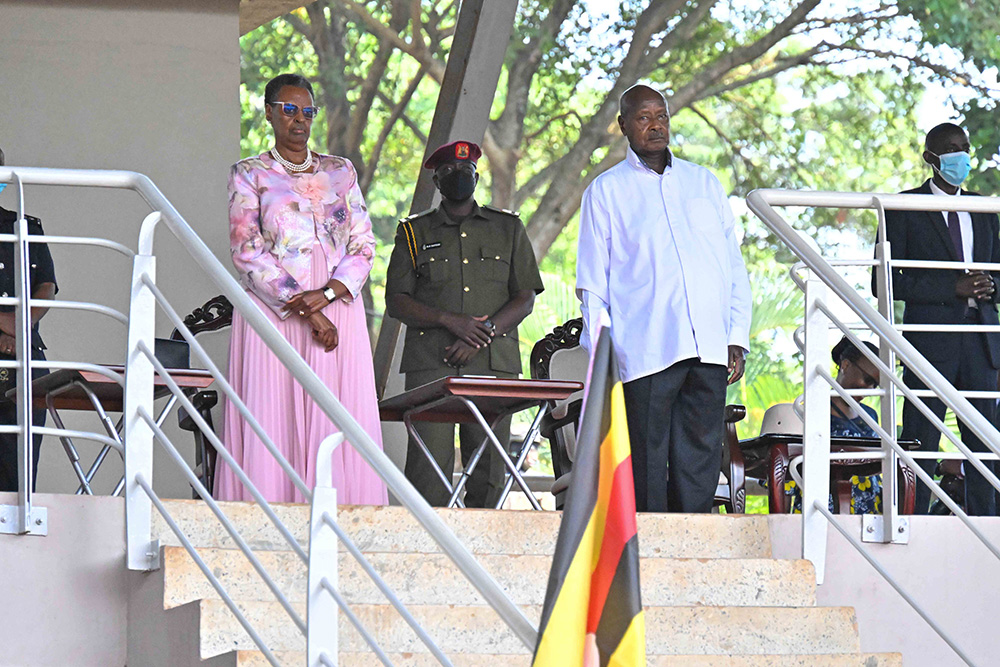
Uganda’s President Yoweri Museveni on June 3, 2024, joined hundreds of thousands of pilgrims at the Uganda Martyrs Shrine of Namugongo in Kampala, Uganda's capital, to mark this year's Martyrs Day celebration. Museveni was joined by his wife Janet and a host of government officials including Prime Minister Robinah Nabbanja. (GSR photo/Gerald Matembu)

